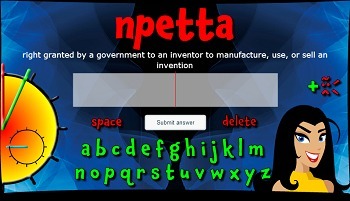Intellectual Property Why Every student needs iSTEAM
upheavalmedia
5 Followers
Grade Levels
6th - 9th, Homeschool
Subjects
Resource Type
Standards
CCSS6.NS.A.1
CCSS7.NS.A.1
CCSS8.NS.A.1
CCSS6.RP.A.3
CCSS7.RP.A.3
Formats Included
- PDF
Pages
27 pages
upheavalmedia
5 Followers
Description
America is the wild wild world of Intellectual Property
Widgets and manufacturing ruled the 20th century
Ideas and intellectual property will rule 21st century
Students need to understand why iSTEAM (inventing, Science, Technology, Engineering, Arts and Mathematics) is needed and why they need to specialize in it.
Widgets and manufacturing ruled the 20th century
Ideas and intellectual property will rule 21st century
Students need to understand why iSTEAM (inventing, Science, Technology, Engineering, Arts and Mathematics) is needed and why they need to specialize in it.
Total Pages
27 pages
Answer Key
N/A
Teaching Duration
N/A
Report this resource to TPT
Reported resources will be reviewed by our team. Report this resource to let us know if this resource violates TPT’s content guidelines.
Standards
to see state-specific standards (only available in the US).
CCSS6.NS.A.1
Interpret and compute quotients of fractions, and solve word problems involving division of fractions by fractions, e.g., by using visual fraction models and equations to represent the problem. For example, create a story context for (2/3) ÷ (3/4) and use a visual fraction model to show the quotient; use the relationship between multiplication and division to explain that (2/3) ÷ (3/4) = 8/9 because 3/4 of 8/9 is 2/3. (In general, (𝘢/𝘣) ÷ (𝘤/𝘥) = 𝘢𝘥/𝘣𝘤.) How much chocolate will each person get if 3 people share 1/2 lb of chocolate equally? How many 3/4-cup servings are in 2/3 of a cup of yogurt? How wide is a rectangular strip of land with length 3/4 mi and area 1/2 square mi?
CCSS7.NS.A.1
Apply and extend previous understandings of addition and subtraction to add and subtract rational numbers; represent addition and subtraction on a horizontal or vertical number line diagram.
CCSS8.NS.A.1
Know that numbers that are not rational are called irrational. Understand informally that every number has a decimal expansion; for rational numbers show that the decimal expansion repeats eventually, and convert a decimal expansion which repeats eventually into a rational number.
CCSS6.RP.A.3
Use ratio and rate reasoning to solve real-world and mathematical problems, e.g., by reasoning about tables of equivalent ratios, tape diagrams, double number line diagrams, or equations.
CCSS7.RP.A.3
Use proportional relationships to solve multistep ratio and percent problems. Examples: simple interest, tax, markups and markdowns, gratuities and commissions, fees, percent increase and decrease, percent error.



